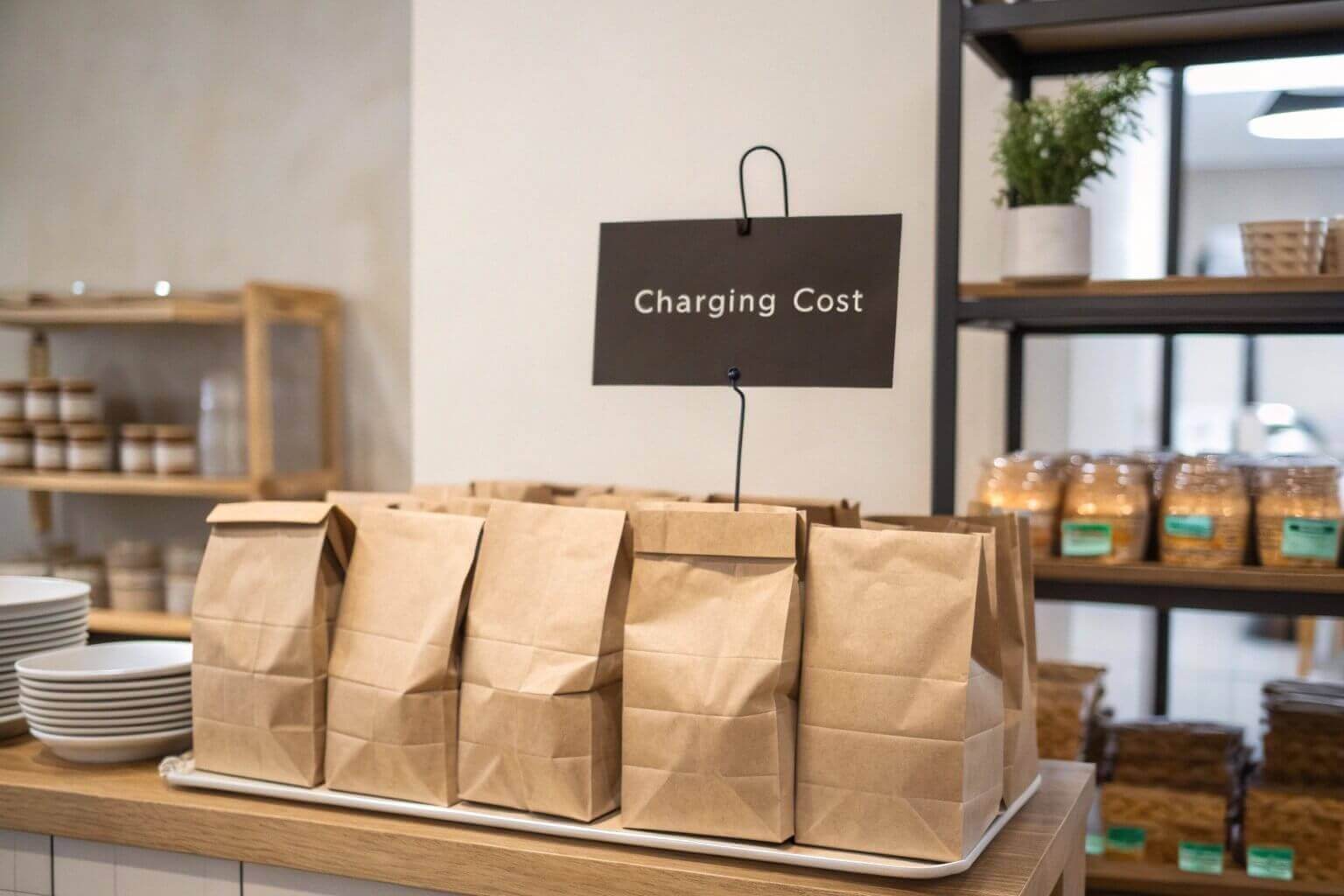Retailers and food businesses need reliable packaging. The wrong bag size, style, or material can frustrate customers and hurt your brand image.
Paper bags remain popular because they are recyclable, customizable, and brand-friendly. Choosing the right type, size, and strength ensures functionality, sustainability, and customer satisfaction.

Paper bags are not just carriers. They are a statement about your brand’s values. Let’s explore why some stores avoid them, their pros and cons, and what buyers should know.
Why don’t grocery stores use paper bags anymore?
Customers often ask why supermarkets stopped handing out paper bags. The answer is linked to cost, durability, and convenience.
Grocery stores reduced paper bag use because they are costly, less durable in wet conditions, and take up more storage space compared to plastic alternatives.

Dive deeper: Grocery packaging choices
- Plastic bags: Cheap, waterproof, compact to store.
- Paper bags: Biodegradable, recyclable, but higher production costs.
- Reusable bags: Durable, often non-woven or cloth, encourage repeat use.
| Bag Type | Cost | Durability | Eco Profile |
|---|---|---|---|
| Plastic | Low | High in wet | Low |
| Paper | Medium | Weak in wet | High |
| Reusable | High | Very strong | High |
In my experience, many stores combine paper and reusable bags to balance eco-image with practicality.
What are the disadvantages of paper bags?
While paper bags look eco-friendly, they are not perfect. Businesses need to weigh benefits and drawbacks before committing.
Disadvantages include higher costs, lower durability in wet conditions, and larger storage requirements compared to plastic bags.

Dive deeper: Key limitations
- Durability: Tear more easily when wet or overloaded.
- Cost: More expensive to produce than plastic.
- Storage: Require more warehouse and counter space.
- Weight capacity: Heavier products may need reinforced handles.
| Challenge | Impact |
|---|---|
| High unit cost | Raises retail expenses |
| Weak in wet | Not suitable for frozen foods |
| Bulk storage | Occupies more shelf space |
| Load limits | Risk of breakage |
That said, with proper reinforcement and lamination, many of these weaknesses can be improved.
What materials are needed for paper bags?
Materials define strength, durability, and brand appeal. Choosing the wrong type of paper leads to wasted costs or poor customer experience.
Paper bags are made from kraft paper (brown or white), recycled paper, or coated art paper. Handles use paper twist, cotton, ribbon, or rope.

Dive deeper: Material options
- Brown kraft: Natural, inexpensive, strong load capacity.
- White kraft: Professional look, ideal for printing logos.
- Art paper: Glossy, premium for boutiques.
- Recycled paper: Eco-friendly, slightly less durable.
| Material | Best Use Case | Strength |
|---|---|---|
| Brown kraft | Grocery, takeaway | High |
| White kraft | Retail branding | Medium |
| Art paper | Luxury retail | Medium-high |
| Recycled | Promotions | Medium |
In my factory, we always match bag material to product weight and brand positioning. Strong handles and reinforced bottoms make all the difference.
Can stores charge you for paper bags?
Shoppers are often surprised when charged for bags at checkout, but this is increasingly common worldwide.
Yes, many stores charge for paper bags due to regulations and costs. Governments encourage charges to reduce single-use waste and promote reusable alternatives.

Dive deeper: Global regulations
- European Union: Mandatory charges on single-use bags.
- United States: Varies by state; many ban plastic and charge for paper.
- China: Requires supermarkets to charge for all bags.
- Middle East: Gradual eco-transition, charges introduced in some cities.
| Region | Rule | Impact |
|---|---|---|
| EU | Fees required | Boost in reusable bag sales |
| US (state-based) | Charges or bans | Mixed adoption |
| China | Charges on all bags | Reduced single-use waste |
| Middle East | Emerging laws | Growing paper bag demand |
In practice, many retailers turn charges into opportunities by offering branded reusable bags alongside paper options.
Conclusion
Paper bags support both retail and food service by combining eco-friendliness with branding potential. Choosing the right type, size, and material ensures function, compliance, and customer satisfaction.

